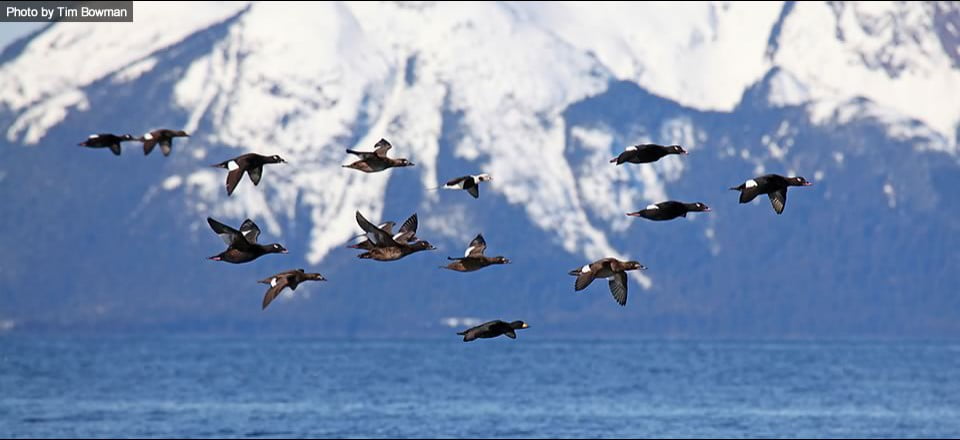Wing tissue collection for sea ducks for stable isotope and genetic analyses

Project Number: 145
Year Funded: 2014
Lead Institution(s): US Geological Survey
Project Lead: Sarah Sonsthagen
Collaborator(s): Tim Bowman (USFWS), Chris Dwyer (USFWS), Scott Gilliland (CWS)
Location: North America
Focal Species: All Sea Ducks, Bufflehead (Bucephala albeola), Barrow’s Goldeneye (Bucephala islandica), Common Goldeneye (Bucephala clangula), Harlequin Duck (Histrionicus histrionicus), Long-tailed Duck (Clangula hyemalis), Common Eider (Somateria mollissima), King Eider (Somateria spectabilis), Spectacled Eider (Somateria fischeri), Steller’s Eider (Polysticta stelleri), Common Merganser (Mergus merganser), Hooded Merganser (Lophodytes cucullatus), Red-breasted Merganser (Mergus serrator), Black Scoter (Melanitta americana), Surf Scoter (Melanitta perspicillata), White-winged Scoter (Melanitta delgandi)
Project Description: The SDJV has made significant investment in filling gaps in our knowledge of in delineation of North American populations of sea ducks, both in the Pacific Flyway, central arctic Canada, and through the Atlantic and Great Lakes Sea Duck Migration Study Obtaining adequate and representative samples via satellite telemetry for some species has been difficult. For example, White-winged Scoters and Long-tailed Ducks have proven difficult to capture and mark on Atlantic wintering areas. Through the Atlantic and Great Lakes Sea Duck Migration Study and previous studies, researchers have been successful in catching Long-tailed Ducks at the primary wintering areas around Cape Cod & Nantucket, Chesapeake Bay and in Lake Ontario. However, Long-tailed Ducks have a very wide distribution in the Northwest Atlantic and Great Lakes, wintering from South Carolina north to Baffin Island and Greenland. For this project, we are archiving tissues collected from wings from harvested sea ducks sent in by hunters to the Species Composition Surveys in Canada and the USA, and possibly tissue samples from birds taken in Greenland. Stable isotopic and/or genetic analyses of these samples may provide an alternative to satellite telemetry for assessing population delineation for these species. Isotopic analyses of wing feather samples from hatch-year birds can reveal where they were hatched and raised, and for adults, where they underwent wing molt. Samples have been obtained from all four flyways in the U.S. and Canada (Atlantic, Mississippi, Central, and Pacific).
NOTE: SDJV has continued wing tissue collections from harvest surveys and live captures through 2022. If you’d like to inquire about the availability of samples for analysis, please contact SDJV US Coordinator at .
NOTE: SDJV has continued wing tissue collections from harvest surveys and live captures through 2022. If you’d like to inquire about the availability of samples for analysis, please contact SDJV US Coordinator at .
Project Reports:
